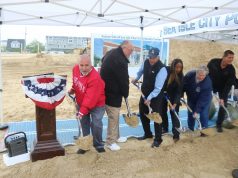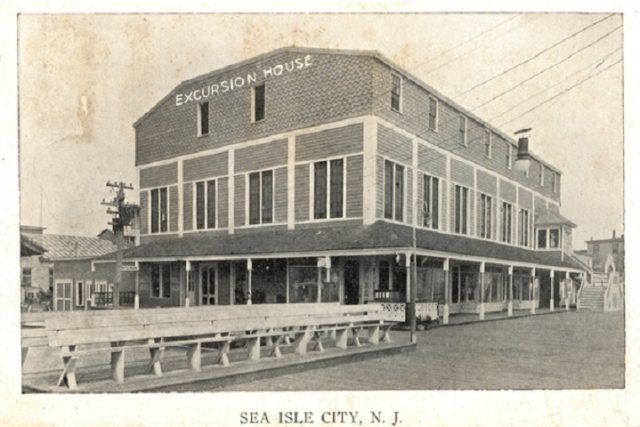
BY BOB THIBAULT
In 1921, the Evening Public Ledger of Philadelphia proclaimed: “It is predicted that within a few years the entire Jersey Coast, from Atlantic Highlands to Cape May, will be one continuous city one hundred and fifty miles long.” It took a little longer (and a few more bridges), but here we are.
After the frenzy of World War I, the pendulum of life had swung back toward normal, paused, then roared on into the new decade. But Sea Isle City took it all pretty much in stride. The Twenties became a time of transition coupled with continued, and sometimes boisterous, growth.
(Prohibition lasted through the entire decade and is a subject all to itself, a subject which was covered in a previous Spotlight on History article, July 2019. This is the rest of the story.)
Government:
Fresh from the 1919 recall of Sea Isle’s disappearing mayor Richard Cronecker, Irving Fitch held the reins of the city when the new decade began. Sea Isle, with an official population of 564, was operating under the Commission form of government at the time.
On May 20, 1924, for some unexplained reason, a vote was taken to change to a Councilmanic form. For some equally unexplained reason, the change was turned down “by a great majority.” But with the lightning speed of bureaucracy, the proposed change finally came about 83 years later.
Maurice Sofroney had lost the election of 1920 to Irving Fitch by 28 votes. In 1925 it was Sofroney’s turn, and he served as a popular mayor through the end of the decade. Both Fitch and Sofroney were charter members of the Sea Isle City Rotary Club.
Prior to 1921, all gas, water and electric utilities were privately owned, and certain services, especially electricity, were available only at times specified by the owners. (In 1916, ironing was allowed only on Wednesday afternoons). The city government then stepped in and bought all the utilities. Life became a little easier.
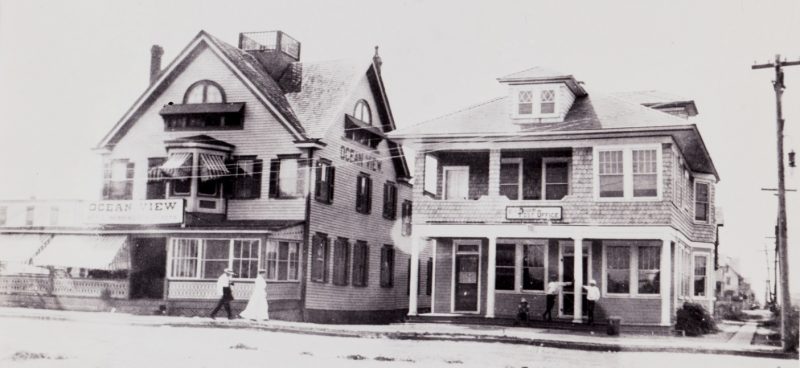
Postal Delivery Service started in Sea Isle on June 16, 1924. While this was an overall good thing, it placed a burden on the Post Office and on Louis Lamanna, the town’s only postman. One difficulty was that many of the cross streets carried exotic names like “Ariadne” and “Westphalia.”
The city determined that it would be much simpler if all Sea Isle’s east-west streets be assigned more boring, but more efficient numerical designations. So they passed an ordinance and it has been that way ever since.
Transportation:
The motorcar had become king. The Pennsylvania and Reading trains were still running to Sea Isle, but with gradually reduced ridership. By 1925, the Reading line was averaging only five passengers a day to Sea Isle, so they closed up shop and tore down their bridge over Corson’s Inlet. The Pennsy persevered into the Forties.
There was no more trolley service between downtown Sea Isle and Townsend’s Inlet. The electrified trolley had gone out of business in 1916 after 12 years of operation along Landis Avenue. Some of the slack was taken up by a taxi service started by Braca Enterprises, with John Braca’s wife as the principal driver. The fare to T.I. was 25 cents.
Not everyone had a car. Plus, the outlying areas became a bit isolated when the breadwinner needed the family automobile during the week to drive to his or her mainland occupation. Enter the hucksters. They would drive their wagons from the mainland and deliver fresh produce directly door-to-door. The term “huckster” had a more positive connotation in those days.
Commerce and Industry:
By the 1920s Sea Isle had become a modest mercantile center with stores that sold everything from dry goods to candy bars. Some of the more prominent were the American Store, the A&P, Pfeiffer’s Department Store, the Neptune Department Store, and Braca Enterprises. The list goes on. There were lumber companies and boat builders, but the two major industries in the 1920s continued to be fishing and tourism.
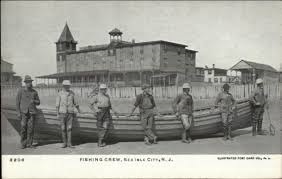
Sea Isle had become a leader in the commercial fishing industry. In 1921, there were seven companies in the city devoted to pound fishing – a process where stakes were driven into the ocean and netting attached to form a “pound” in order to capture large amounts of fish in a single haul. The resulting catch was then transported in refrigerated trucks to be sold as far away as Philadelphia, and beyond.
Sea Isle’s tourism industry continued to flourish. Although the grand hotels were on the wane (the massive Continental was demolished in 1921), rental cottages were taking their place. Many people would still come by train, but many more took advantage of their motor cars for short visits. To accommodate the desires of its visitors, Sea Isle offered a bundle of attractions.
Fun in the Sun:
The beach has always been Sea Isle’s core attraction – and it was free back then. Pastimes could be totally benign: lying in the soft sand, soaking up some sun while being visited by the occasional buzzard-size green fly with temperament to match.
There were clambakes, picnics, carnivals, fireworks, pie-eating contests, and even bathing costume contests (first prize $10) on the beach. But the most fun seemed to involve motion of one kind or another. People could, of course, dash up and down the beach at their pleasure or in competition, sometimes with added variations such as folks jumping about in burlap sacks.
Group exercising was in vogue even back in the 1920s. Horseback riding was popular, but one was required to stay away from the ocean when bathers were present. To add a little more motion (and noise) to the proceedings, automobile races were held in the sand.
Bi-planes would land on the beach and offer rides for a dollar. But for really loud clatter and boisterous fun, one couldn’t beat the motorcycle races. These sprints back and forth on the beach sometimes combined the dash and sputter of the bikes with, of all things, beauty contests. It’s said that the cycle clubs would bring the ladies with them to be selected and sponsored by various Sea Isle City clubs. It’s not clear how all this fit together – but what sport.
Fun on the Boardwalk:
It wasn’t Atlantic City, but there was plenty on Sea Isle’s 43-block boardwalk to entertain visitors. Besides the major venues such as Excursion House and the Ocean Pier, there were souvenir shops, ice cream parlors, games of chance, etc., everything one sees on Sea Isle’s Promenade today.
And to cap off an afternoon’s stroll on the boards (real boards – the asphalt wasn’t added until 1963), there were still plenty of hotels along the way where one could get civilized solid and liquid refreshments.
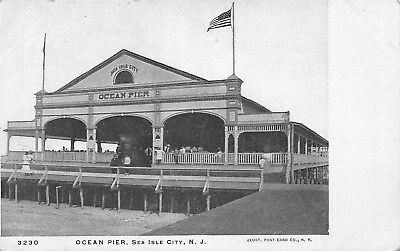
Band concerts, dances, fishing, and even basketball games were in vogue in the 1920s on the Ocean Pier, a 75-foot wide structure which extended out over the waves between 41st and 42nd Streets. The multi-tiered Excursion House on the west side of the boardwalk (where Excursion Park is now) played host to dances, skating, boxing matches, and a movie theater. But perhaps the most celebrated boardwalk event of any season was the annual Baby Parade inaugurated by the Sea Isle City Women’s Civic Club in 1916. There was no end of fun.
Add the impact and excitement of Prohibition to the mix, and it’s easy to see that Sea Isle in the 1920s was a toddling town, still growing, but now with its own established character as a resort destination. Tourists and summer residents continued to pour in by the thousands, while the permanent population only reached 850 by the end of the decade. It sounds a lot like today.
Some Events Remembered:
1920: On February 5, the three-masted schooner George R. Skolfield ran aground at 25th Street, and disappeared for half-a-century.
1920: The storm of 1920 was a real nor’easter, dropping nine inches of rain in 24 hours. The railroad bed to the mainland was washed out. Travel was restricted to rowboats.
1922: A charter was granted for the First National Bank of Sea Isle. First-day deposits totaled $124,890.
1923: The 35th Street lighthouse, built in 1885, was replaced by a steel tower.
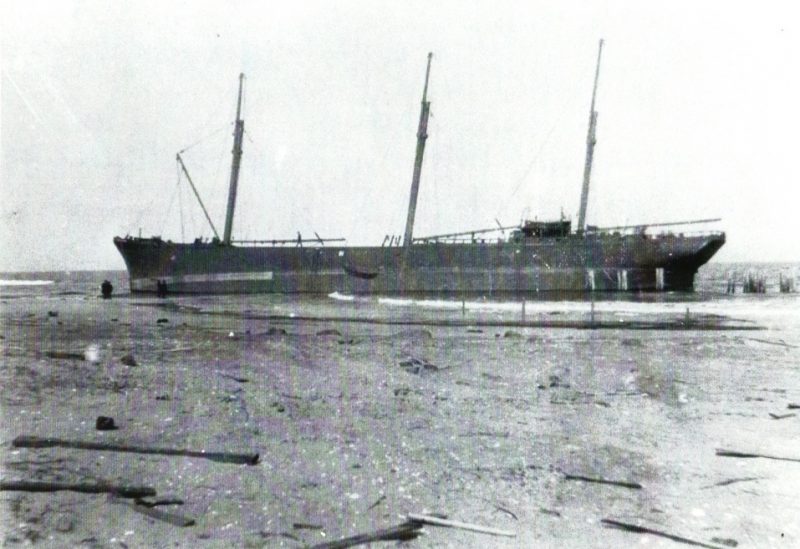
1923: The Messiah Lutheran Church in Townsend’s Inlet was dedicated.
1923: A foundation was laid for a Catholic School but it wasn’t actually built until 30 years later.
1925: The Reading railroad bridge over Corson’s Inlet was torn down.
1926: The new church and parsonage for the Messiah Lutheran Church in downtown Sea Isle was dedicated.
1926: The Sea Isle City Rotary Club was founded.
1926: The Sea Isle City Hospital and Training School was established by Claude Van Hook at 48th Street and Pleasure Avenue. It had previously been the Shelbourne Hotel.
1929: On May 3, a 60-foot sperm whale beached itself in the area known as Whale Beach. It’s said that up to 100,000 visitors stopped by to see the “odiferous” spectacle, leading to massive traffic jams.
To learn more about the 1920s era in Sea Isle, and to browse through the collection of photos, literature, and artifacts, please visit the Sea Isle City Historical Museum at 48th Street and Central Avenue. Access the website at www.seaislemuseum.com or call 609-263-2992. Current hours are 10 a.m. to 3 p.m. Monday, Tuesday, Thursday, and Friday.
This “Spotlight on History” was written by Sea Isle City Historical Society Volunteer Bob Thibault.

